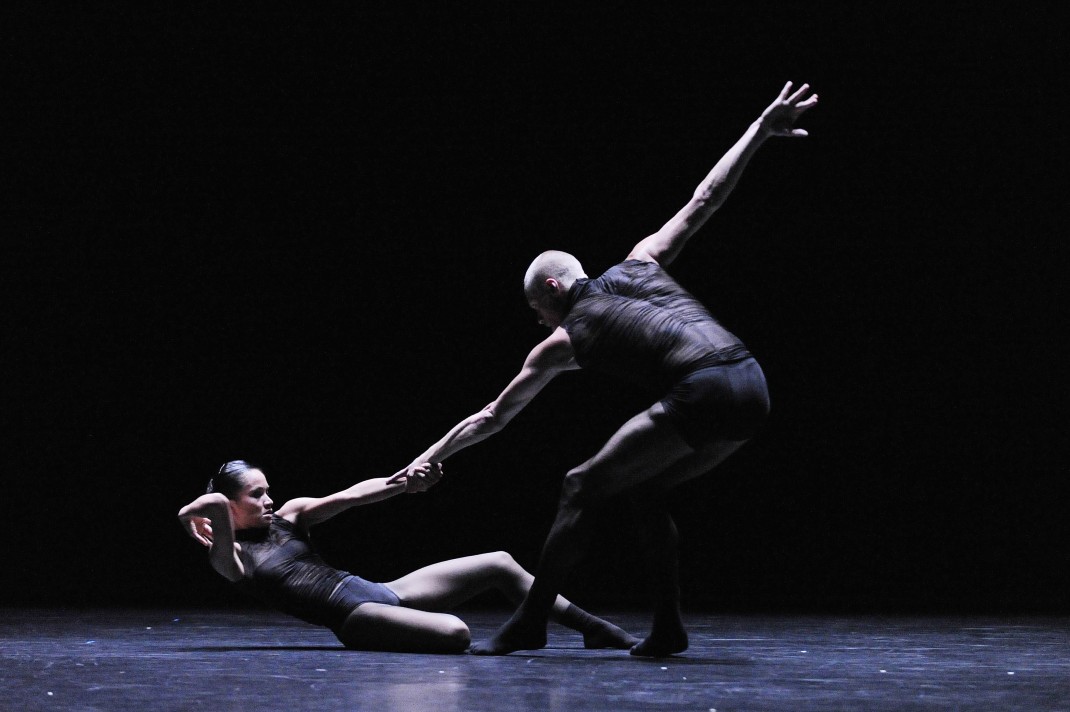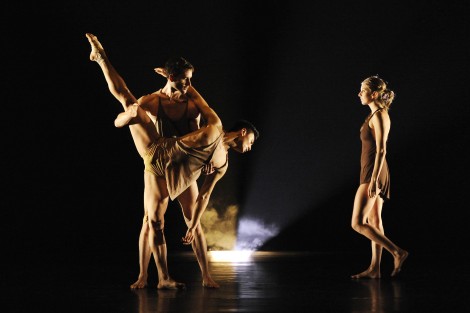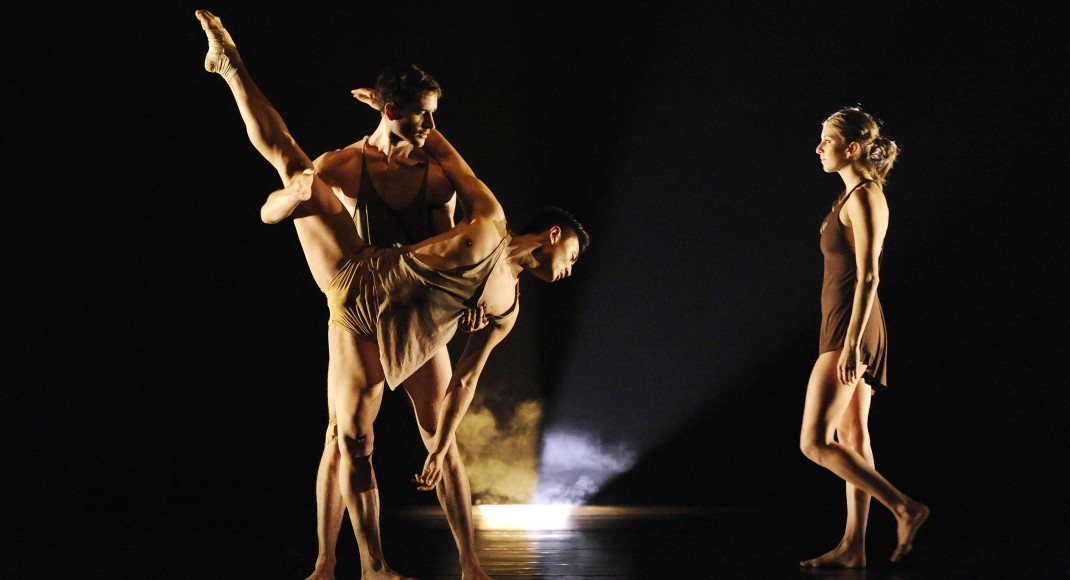This latest program from Sydney Dance Company featured two works: Raw models by Italian-born choreographer Jacopo Godani and LANDforms by Sydney Dance Company’s artistic director, Rafael Bonachela.

Raw models opened the program and I have to admit that I read the choreographer’s note before the curtain went up. Bad move probably because it was a decidedly alienating note and smacked to me of meaningless, intellectual jargon. The dancing, however, was not alienating, although it would have to be described as intense or perhaps severe.
The stage was set as a black box: two black side screens and a black backdrop/screen. The dancers were dressed minimally in black lycra-style short shorts and transparent tops. They wore what I think were skin-tight, soft leather ankle boots. This footwear was interesting because the lighting (by Godani) was such that most of the time it was hard to tell until curtain call time whether the black shadows at foot/ankle level were just shadows on bare feet and legs or whether the dancers were wearing some kind of footwear. Sometimes, as a result of the lighting, the dancers looked as though they had no feet, or that their legs ended in some kind of malformation. This reminded me of a Francis Bacon painting where bodies are distorted and contorted, not completely beyond recognition but enough to make one wonder.
In terms of choreography, Godani had the dancers moving as if they were jointless. Their arms in particular rippled and undulated, but at such a speed that at times they became blurred. Bacon and his distorted bodies again slipped into my mind. Most of the movement was performed with the dancers bunched tightly together so not only did the bodies look distorted they seemed not able to separate themselves from each other. But the work was very slick, very shiny, although despite the coupling of bodies throughout to me it looked a-sexual.
Production photographs from Raw models are interesting. They show off the dancers and the costumes beautifully but give no idea really of what the piece looked like as a moving canvas of bodies. While this is the case most of the time with dance, it seems even more of an issue with Raw models given the effects on the eye that Godani’s work has. Nothing like being there in the end.
Raw models was performed to a commissioned electronic score by Ulrich Mueller and Siegfried Roessert of the German experimental group 48nord, which added to the bleakness of the work (and again to my feeling that Bacon was overseeing its unfolding).
After all the gloom and blackness, Bonachela’s LANDforms seemed like it came from another planet. It opened with a solo by Juliette Barton whose dancing and understanding of Bonachela’s movement style just gets better and better. Bathed in a warm golden light (lighting by Mark Dyson) she moved through Bonachela’s flowing, intricate choreographic phrases as if she were born to do so.
Bonachela has spoken elsewhere about the development of this work with composer Ezio Bosso, and about its genesis in ideas about the weather and the landscape. But what struck me more than anything was the manner in which Bonachela had structured this work. I loved the variety and dynamics of the patterns he developed throughoout. There were times when the pace was serene, others when it was more frenetic. And in the most frenetic section of all bodies hurtled across the stage space from all directions. Here the athletic Chen Wen was a standout as he threw himself into one leap and turn after another. The second section, composed entirely of duets, was also particularly impressive. Here we saw some duets for two men, some for two women and some for a man and woman. Each had a different expressive quality and gained yet another texture if it were the only duet on stage or if it were just one among several happening at the same time.
Bosso’s luscious score for piano, violin, cello and voice was played live in the pit with Bosso directing from the piano. Towards the end Katie Noonan slipped in to add her distinctive voice to the piano trio.
Sydney Dance Company is looking brilliant and its repertoire, whether bleak or passionate, is receiving great audience response. Cheering, whistling, stamping, and the drumming of heels greet the fall of the curtain.
Michelle Potter, 10 April 2011
Featured image: Juliette Barton, Chen Wen and Richard Cilli in LANDforms. Courtesy Sydney Dance Company


